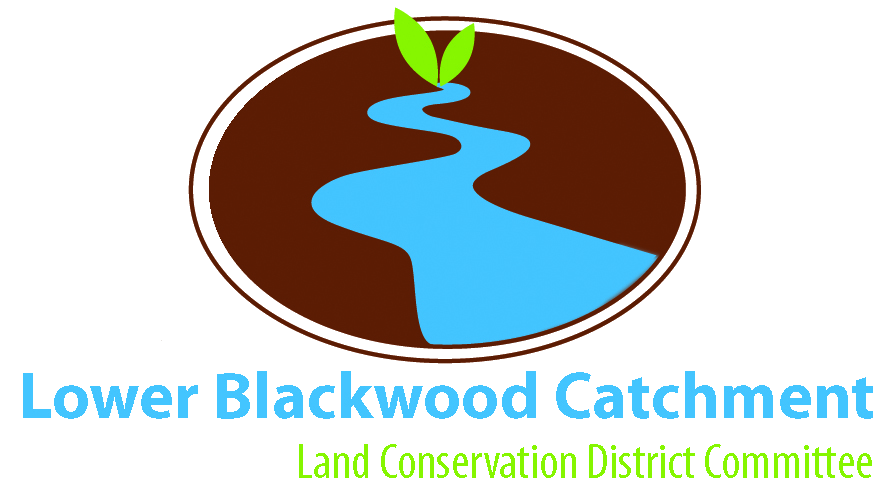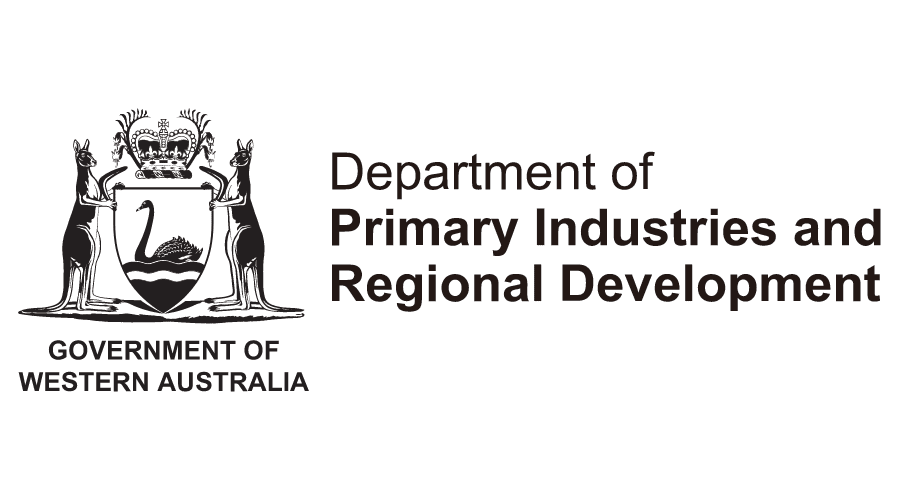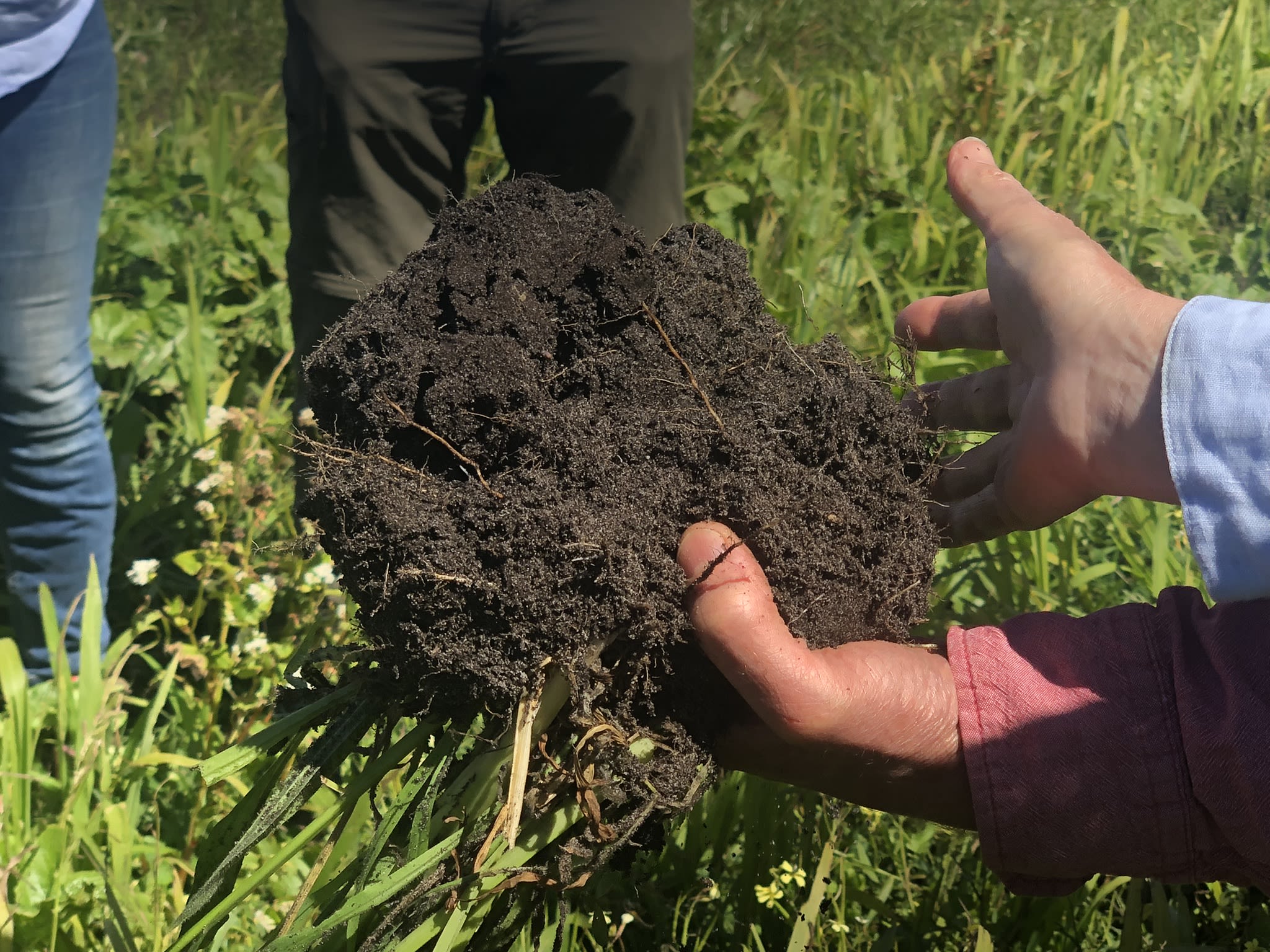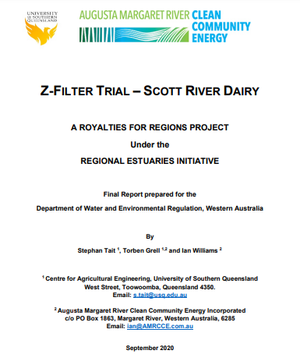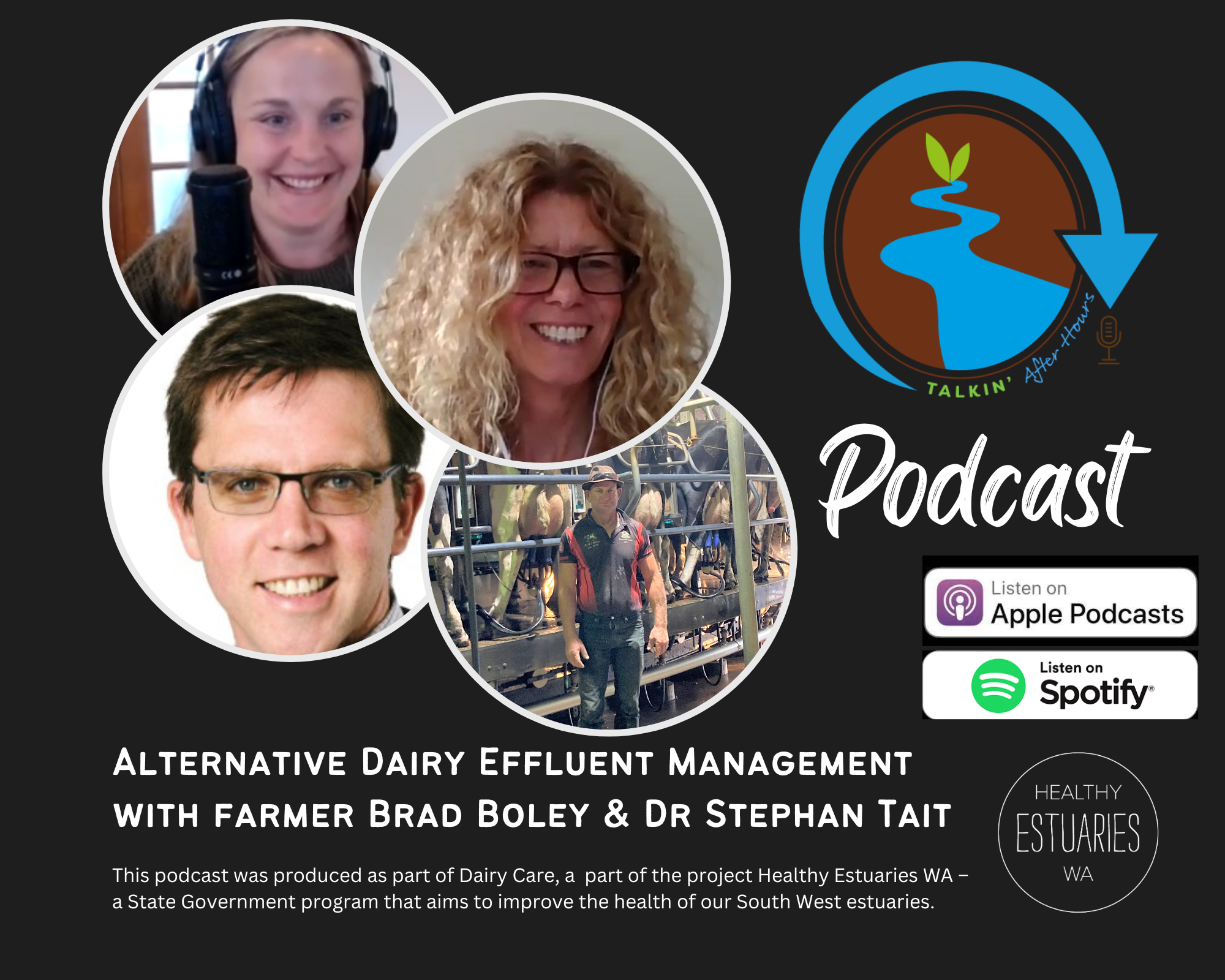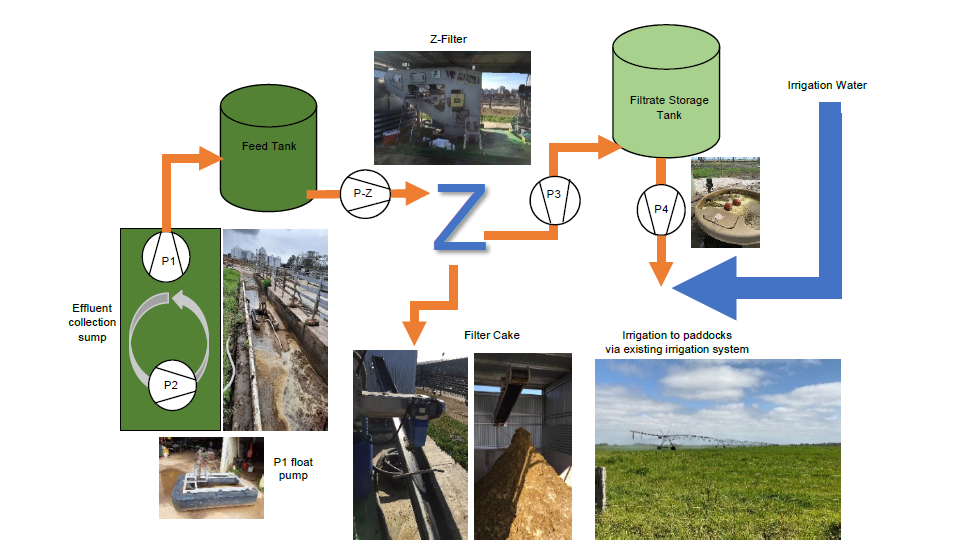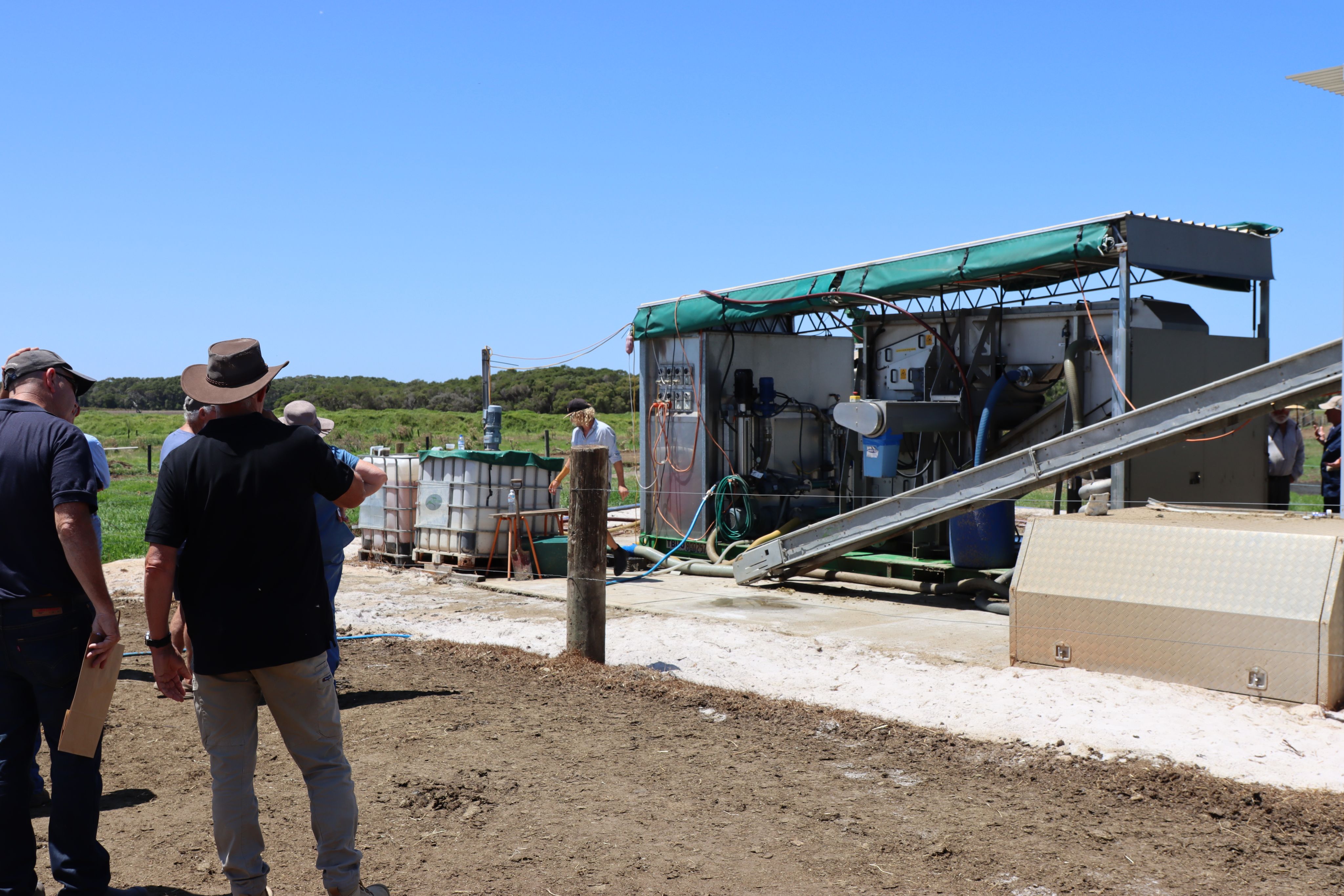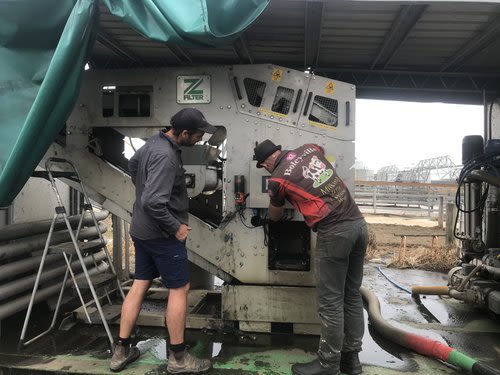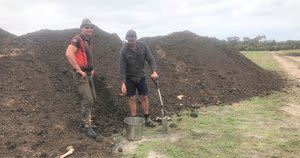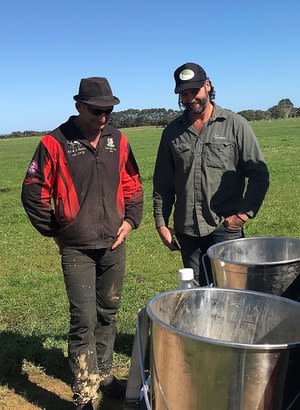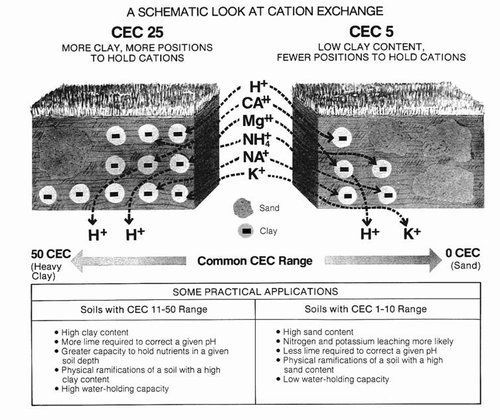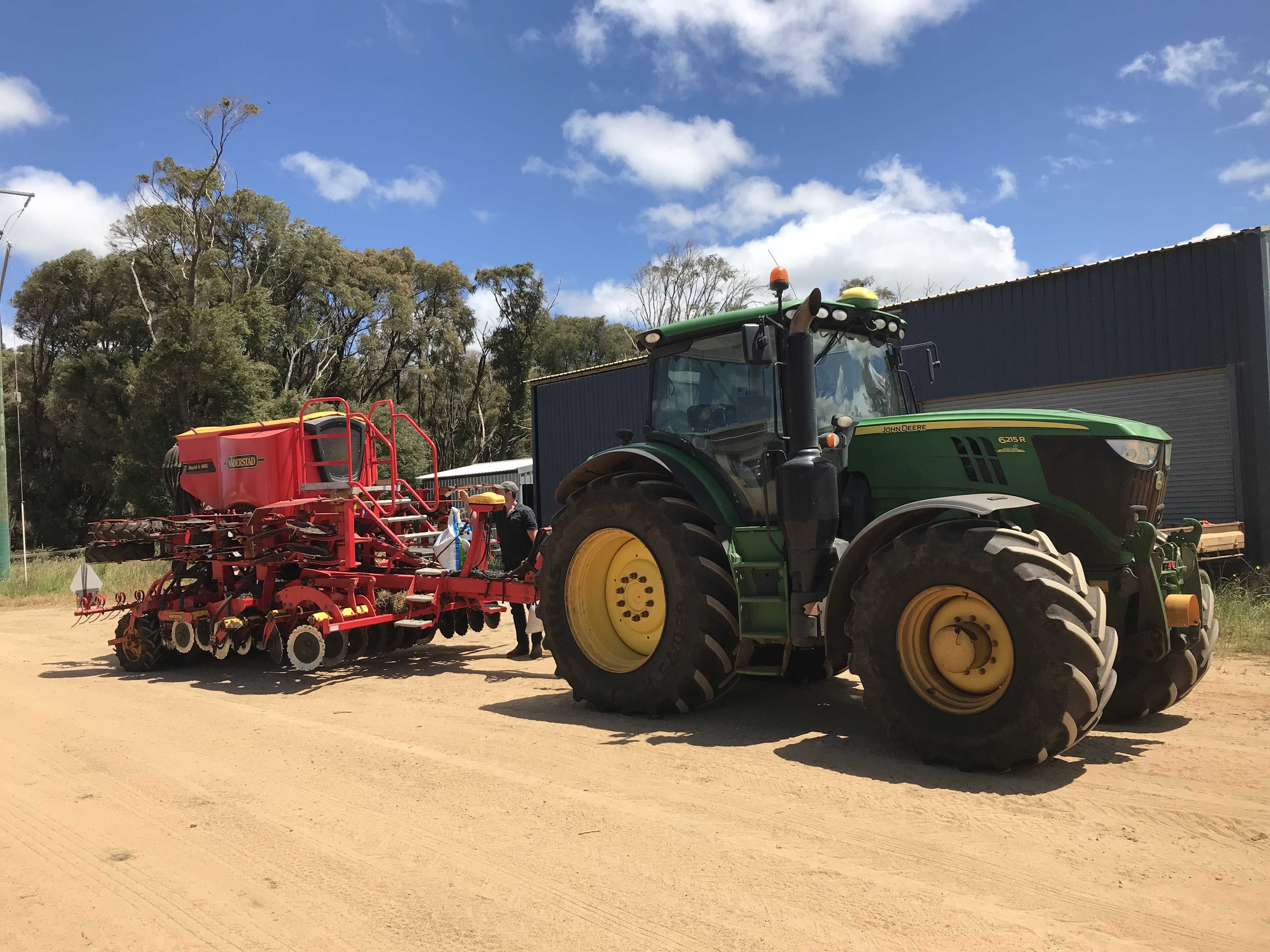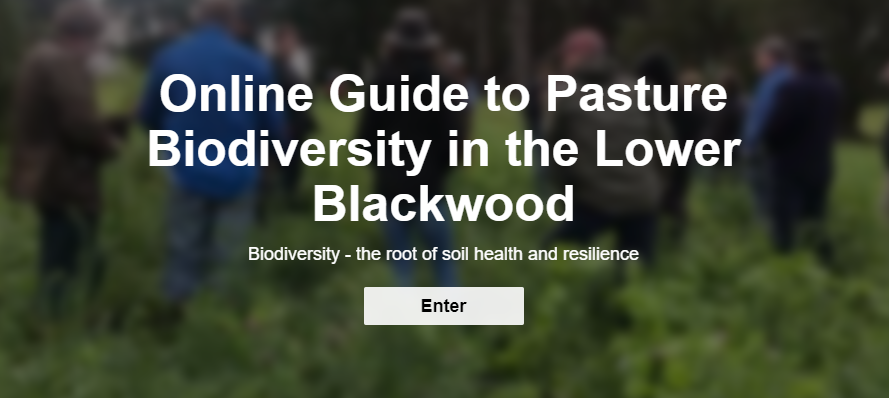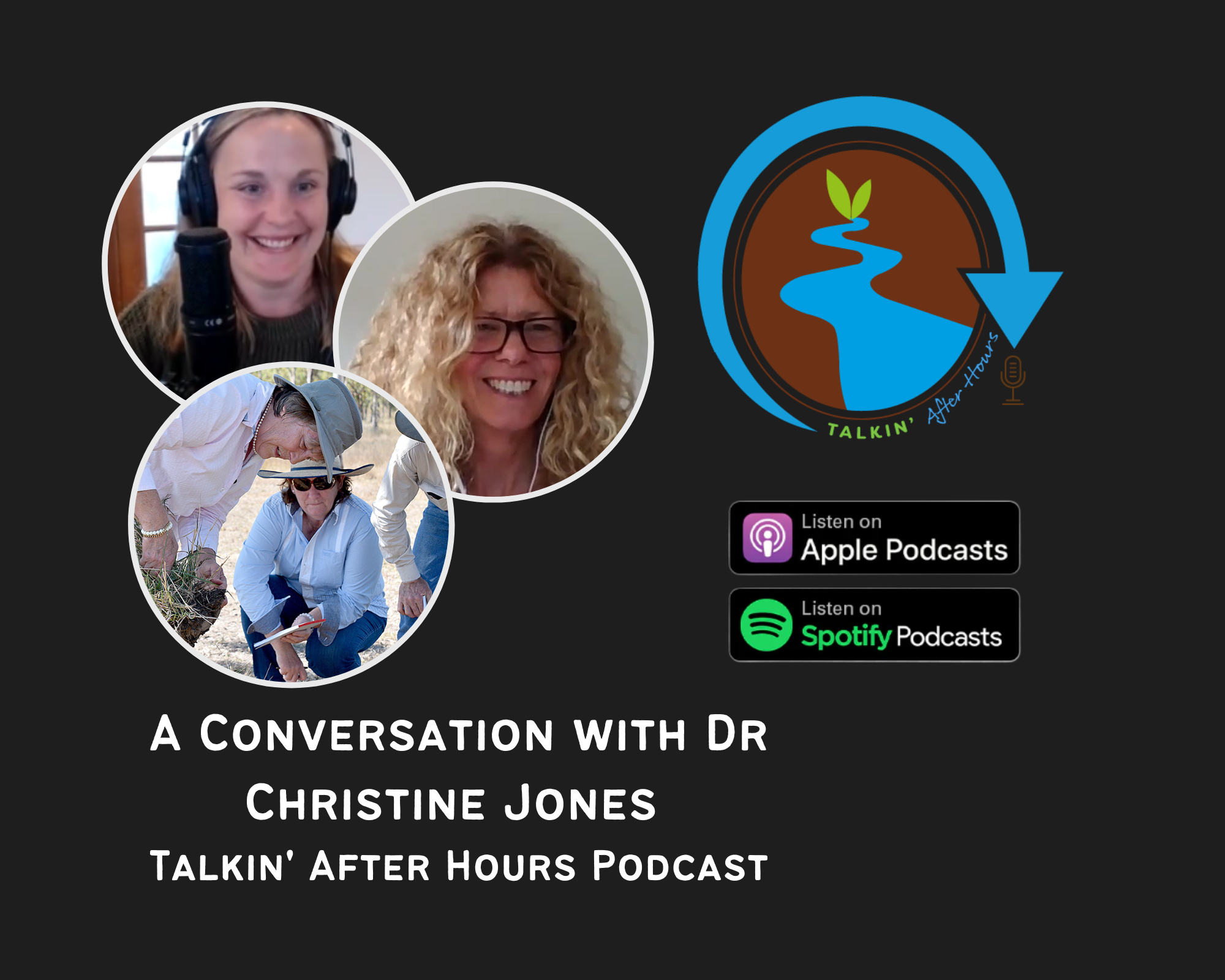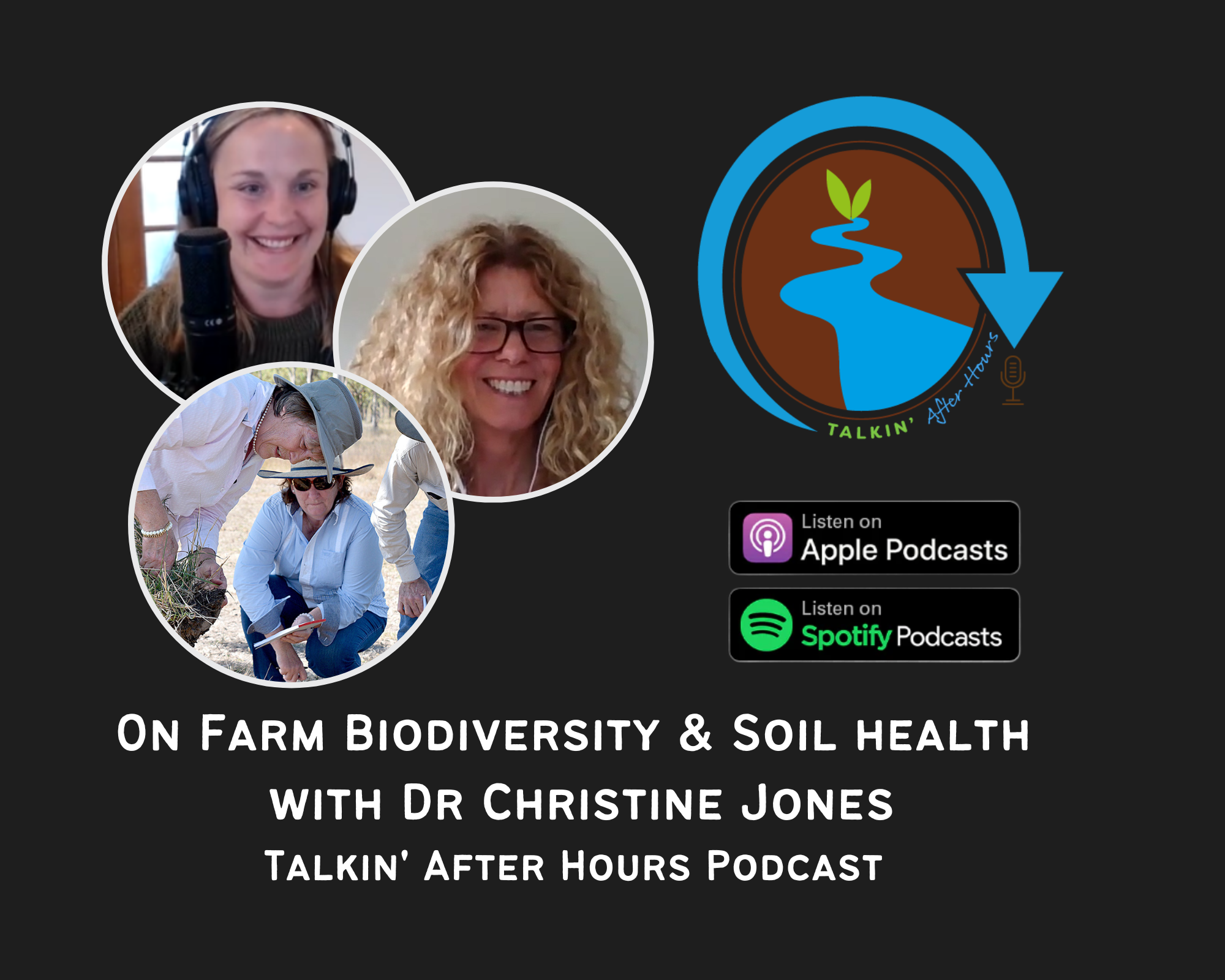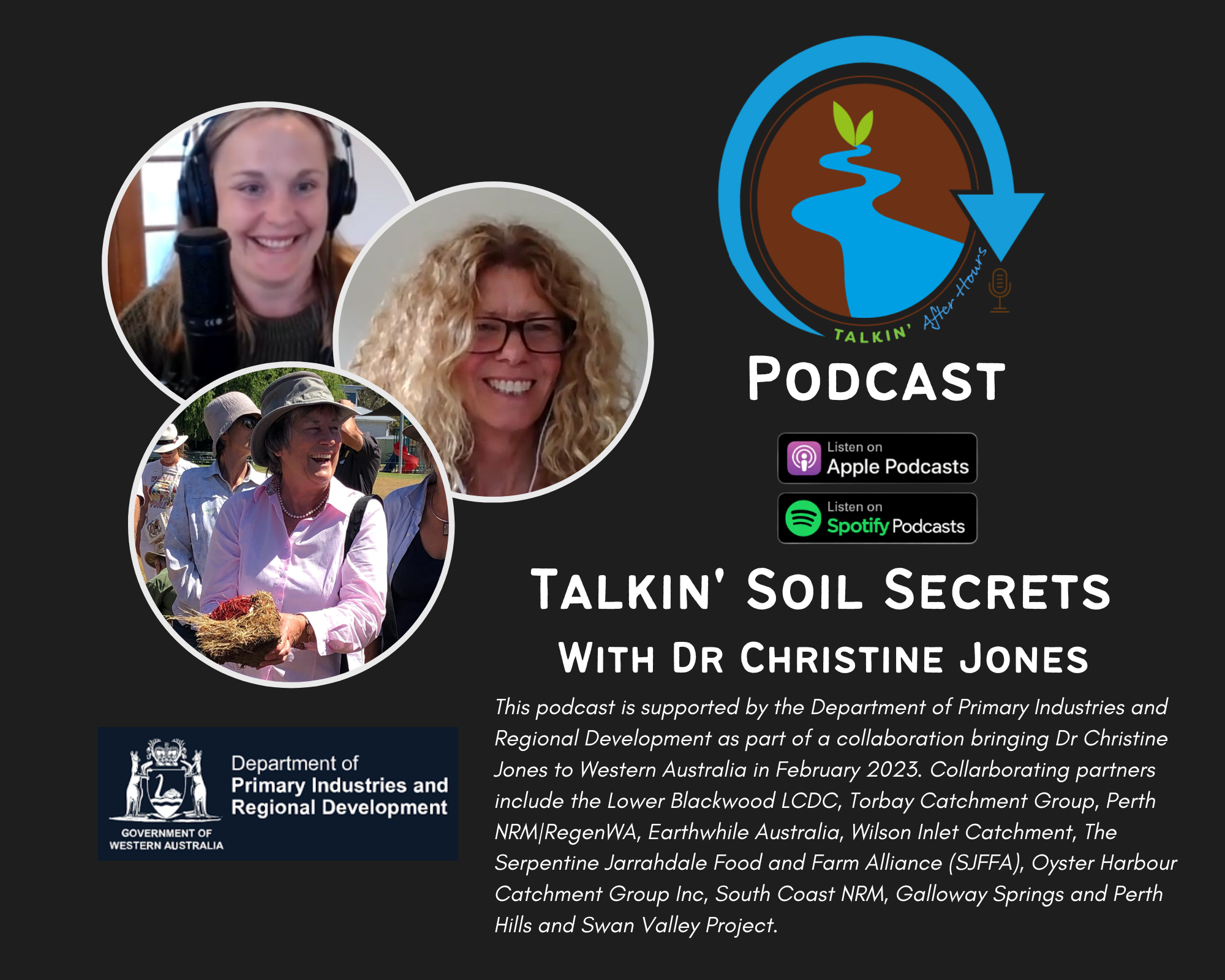Case Study: Boley Pastoral
Dairying to be Different, Scott River, Western Australia

In February 2023, Dr. Christine Jones toured Perth and the south west of WA hosting workshops and masterclasses to share her insights and knowledge on building soil health.
The workshops and masterclasses were supported by the Department of Primary Industries & Regional Development in a collaboration between the Lower Blackwood LCDC, Torbay Catchment Group, Perth NRM/RegenWA, Earthwhile Australia, Wilson Inlet Catchment, The Serpentine Jarrahdale Food and Farm Alliance (SJFFA), Oyster Harbour Catchment Group Inc, South Coast NRM, Galloway Springs and the Department of Primary Industries and Development Perth Hills and Swan Valley Project.
Roadshow Case Studies
As part of the roadshow activities, a series of case studies have been developed to share the journeys of local farmers following regenerative agriculture principles. These farmers have candidly shared their experiences - highs and lows - hoping that they can help other farmers along the way.
The development of this case study was also supported through funding from the Augusta Margaret River Shire's Environmental Management Fund & the Western Australian Government’s State NRM Program.
Background: Boley Pastoral
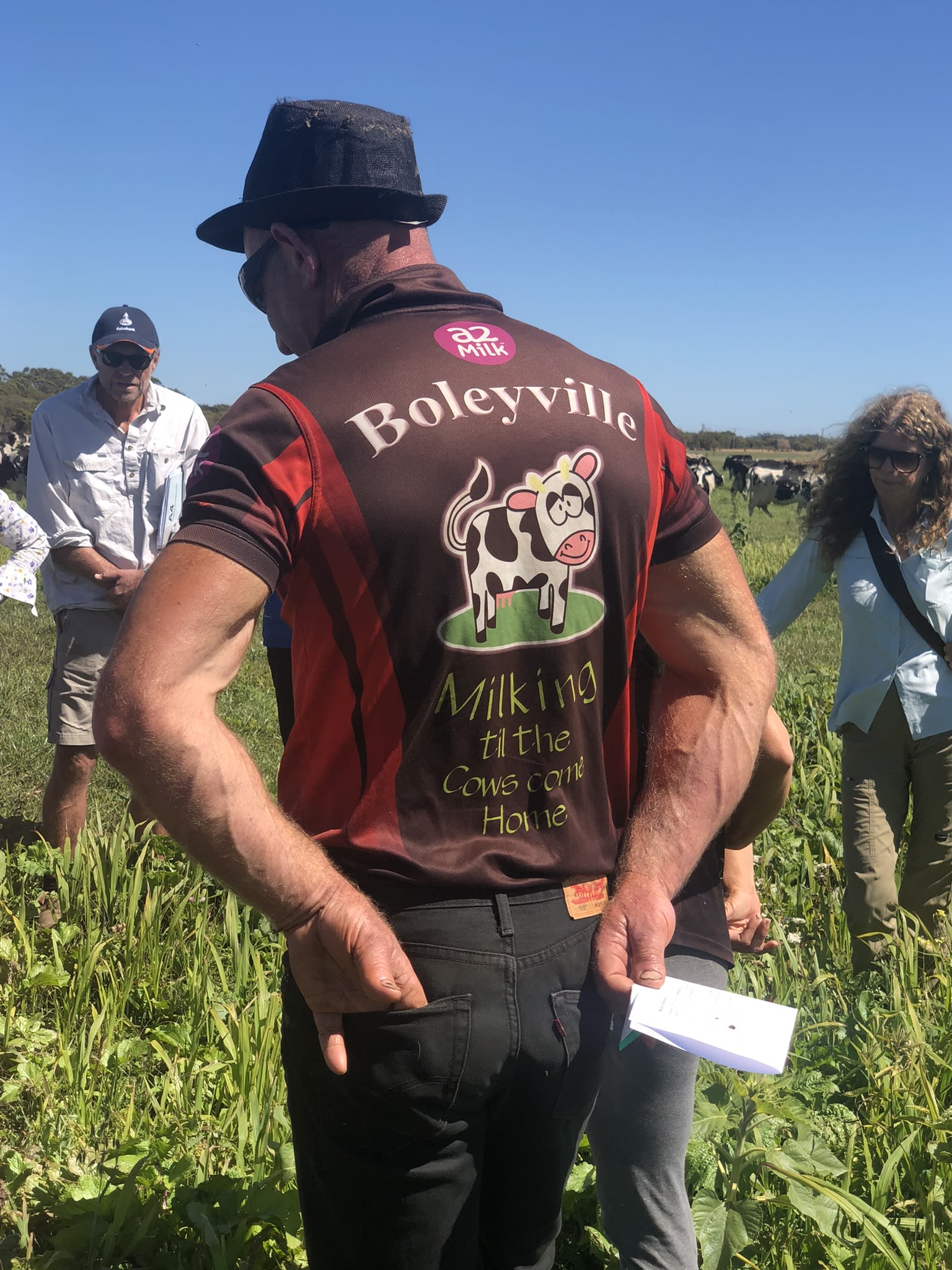
Background
Brad Boley is a second generation diary farmer. He returned from school in the mid 1980s to help his parents, Preston and Van Boley, to run the family farm.
The family originally started dairy farming in Busselton on 600 acres milking 80 cows. In the mid 1990's the family looked to expand the dairy operation and as they already owned a couple of run off farms in the Scott River, it was always a goal to move the operation down there. The catchment's high rain fall, combined with the opportunity for large broadacre dairy & beef farming made the Scott River the perfect choice and in 1996 the family moved.
Brad grew up working alongside his father and in the process developed a love for dairy farming & and the farm - it was busy and hard but Brad says, "a great environment to grow up in."
A lot of the farms down in the Scott were just runoff blocks and the Boley's was no different, the blocks weren't actually being lived on, they were undeveloped farms and needed a fair bit of work to bring them up to productive capacity.
"We developed the farm from a bare block of land, we had to clear a couple of hundred acres, renovate 2000 acres, put in 35km of fencing, 8kms of laneway and build a dairy all in 12 months. We have put our heart and soul into the place." - Brad
All of the 4 to 6ha paddocks are permanently fenced with water in every paddock. Brad will still measure the grass and divide the paddocks up further with strip graze wires to manage the grazing.
The Landscape
The property sits within the Scott River Catchment which is an important and productive agricultural area. Covering approximately 64,276ha, The Scott River Catchment stretches from Molloy Island to Jangardup Rd north-west of Lake Jasper and is divided between the Shire of Augusta Margaret River in the west and the Shire of Nannup in the east.
Like most other farms in the catchment, the Boley’s property is located on low swampy country. The vegetation present is typically wetland species, with tea tree & paper barks a common feature of uncleared areas. The soils are sandy, and with a high water table, no major creeklines and high rainfall, winter waterlogging is common - drainage has been a necessity.
Birdlife on the property is prolific with seasonal migrations of mountain ducks and even black swans. The irrigated parts of the farm provide year round wet areas - in addition, the property incorporates two big swamp areas that have never been cleared plus some fenced off areas of particularly low swampy country that can’t be farmed - all of which serve effectively as wetlands for bird life.
The farm itself is an 1100 ha of land footprint, with 950 ha of pastured area split into 100 plus paddocks – the average paddock size is between 4 & 6 hectares. Around 75% of the pasture is dry land and the remaining pastures are irrigated with a centre pivot system.
Perennial ryegrass or biennial ryegrass & white clover are the main pasture species grown on the irrigated pastures as they grow for 365 days of the year. Brad has tried putting in some other species like sorghums & lucerne to increase the diversity but has only had limited success. The dryland paddocks are chiefly annual ryegrass & clover.
Motivation for Change
There has been a decline in the land’s productivity over the years with a dramatic increase in that decline occurring over the past decade. In the early 2000’s he was milking 2500 cows on the same acreage, now he is only milking 1200 cows.
“We could not run with 2500 cows at the moment as we are not growing the pasture that we were before”.
Brad explains that his father used to milk 600 cows on the same land and he could make a living on that – but that is simply not possible now. Because of the economics of dairy farming Brad, like many farmers, was forced to get bigger.
“By the time we got to 2500 cows we were smashing on the fertiliser (mostly super & nitrogen) but it got to the stage where we were putting on the same amount of fertiliser and only growing half the grass”. - Brad
It is not an uncommon story but he believes that it happened faster and was more obvious in the Scott River as the soils are a lot more fragile.
“I think we have intensively farmed the country too much in the Scott River, when we first started farming here there was a lot more organic matter but we have taken too much out, we benefitted from that but haven’t replaced it – we need to get the balance back.”. - Brad
This decline in the grass production & the knock-on decline in milk production coupled with the increasing cost of the inputs (due to the need to put more & more on) was a key motivation to look at doing things differently. Going forward Brad wants to regenerate his soils and not farm them as hard as they have been in the past – but there is a caveat.
“Trying to make a dollar out of it, it’s always tight, it’s always a balance between how much money you can invest back into it to keep the place profitable and do a good job of their farming as well – its always been a marginal game. We all (farmers) have big ideas on how we can improve the farm but we still need to balance the economics – it’s a game you have to love" - Brad
Production
The dairy milks 1200 cows, producing 9 million litres milk annually. Brad’s cows of choice are Holstein Friesian (the most common cow breed in dairy farming in Australia), with about 20% of the herd a cross breed with Jersey & Montbéliarde. Brad is the largest producer of A2 milk in Western Australia, A2 milk is a variety of cows' milk that mostly lacks a form of β-casein proteins called A1, and instead has the A2 form. A2 Milk is promoted as an alternative for people who experience gut discomfort after drinking milk.
Brad has spent a lot of time and energy building his A2 herd,
“We had to DNA cattle and breed the A2’s with an A2 bull to get them all A2, its taken us 7 years but we are 100% A2 now, every cow on the farm is an A2 cow”.
When he first started, 37% of his herd was A2, which is common, until the herd reaches 100% the A1 & A2 cows & milk must be kept separate.
All of the 4 to 6ha paddocks are permanently fenced with water in every paddock. Brad will still measure the grass and divide the paddocks up further with strip graze wires to manage the grazing.
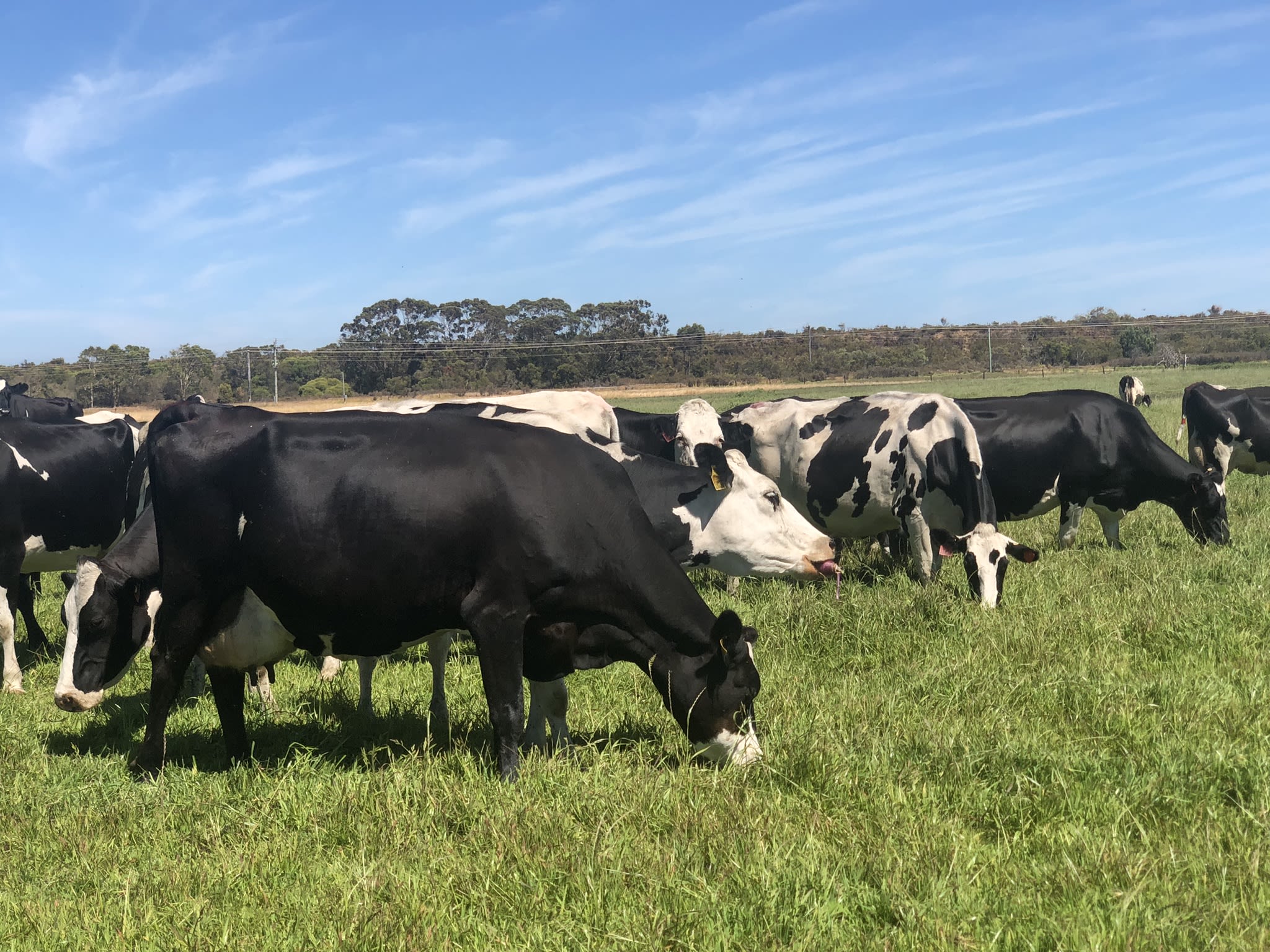
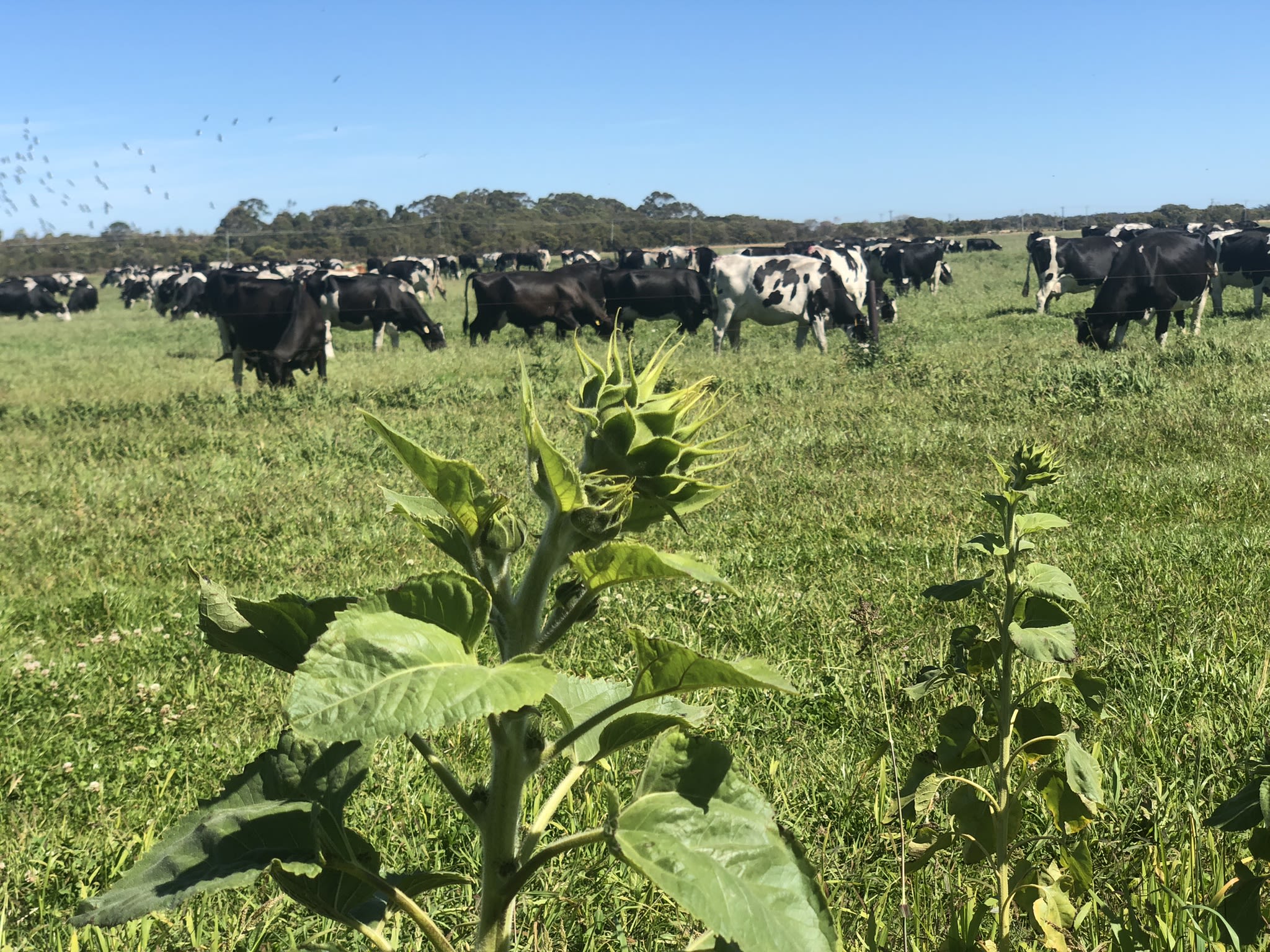
Goal: Boosting Soil Fertility
Brad’s biggest goal (& challenge) is to try to get his soil fertility up, grow more and better quality grass, leading to improved productivity and profitability.
Brad joined the Lower Blackwood LCDC's Regenerative Agriculture in Practice Program 2021 to find out more about practices that could help him achieve his goals. A key outcome of implementing those practices is the building of soil humus levels – more humus means better soil aggregation, improved air and water movement, more active soil biology and improved nutrient cycling – in other words, improved soil fertility.
Brad is also well aware that there is no ‘silver bullet’ and that what took 20 or so years to degrade won’t be fixed overnight. He is prepared to be patient and to try a range of practices to achieve his goals.
“We are on a learning curve ourselves to see what works and what doesn’t.”
Practice Changes and Challenges
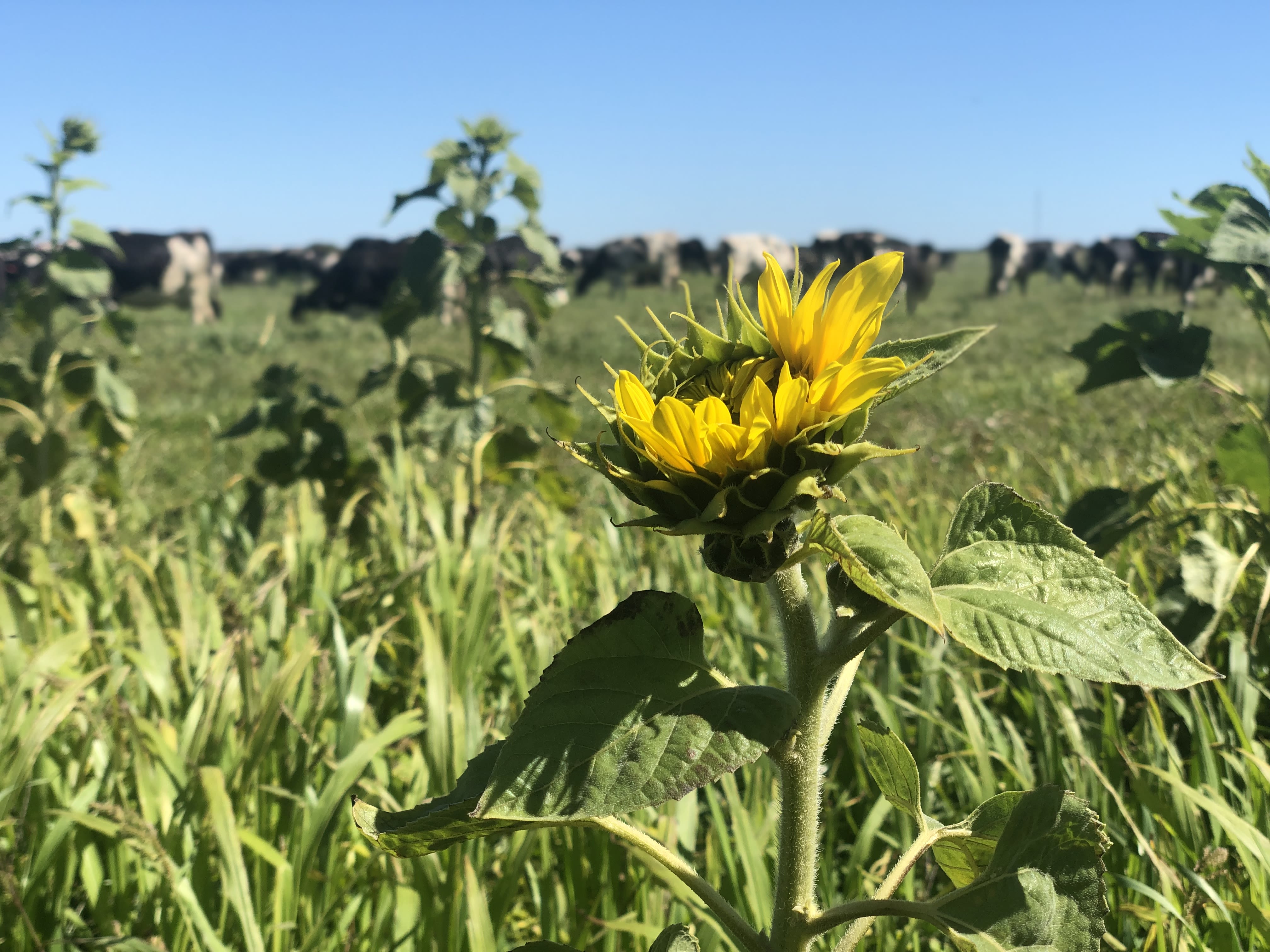
Effluent Management
Effluent Management is a key issue for Dairy Farmers – Brad, like many farmers, used a pond system, with the raw effluent spread out onto the paddocks using a fixed sprinkler system. This practice had the negative consequence of causing a big over-supply of soil phosphorus and potassium in some paddocks.
Read the full Z Filter Trial Report.
In August 2019 Brad partnered with the Augusta Margaret River Clean Community Energy Group, the University of Southern Queensland (USQ) and the Department of Water and Environmental Regulation’s Regional Estuaries Initiative, (in cooperation with the Lower Blackwood LCDC), to trial the Z-Filter, a machine that takes the effluent from the dairy and extrudes the dry fibre from the liquid content into a dry form. The filter works by gravity drainage on an incline, then bending sludge through a serpentine shape with rollers and a final compression sequence to result in a liquid filtrate and a dry cake which is roughly 24% dry matter and much more transportable.
With the help of the Z-Filter, Brad is able to pump filtrate through his centre pivots without clogging the equipment and allows him to spread the diluted filtrate (4% filtrate) over a much larger portion of the farm. He said that over a 14-day period he applies the equivalent of 20 kg of super potash 1:1 and 10 kg of urea, an equivalent value of $70,000 to $80,000 of fertiliser per year. In addition to this, approximately 8-10 tonne of dry cake is being produced per week.
There are some disadvantages with the system though. It is a high maintenance, high labour system (compared to other systems which require less labour). But for Brad the pros outweigh the cons.
“I was motivated to install it the Z filter firstly because I have to manage the effluent from the dairy anyway and secondly because the end products are high value and in a very useable form, the liquid is very clean and doesn’t block up the irrigation system, and the dry cake can be made into compost. I was keen on the regenerative potential of compost and putting the liquids back through the irrigation as fertigation back onto the paddocks – it ticked both boxes for me.”
Brad uses the dry cake from the Z Filter as the nitrogen (green) source for composting. As anyone who makes compost knows, you need greens & browns (carbon) in the right rations to make good quality compost. The carbon comes from the calf bedding hay & fodder left over from the feedlot.
A front end loader is used to do the mixing and form the windrows and turns them every second day until the heat stage is finished. He still figuring out what the best mix is and looking at ways to reduce the labour cost. Turning the windrows into vermicast is one possibility.
“We are trialling putting worms into the compost – the worms don’t seem to like the compost so far, in fact they seem to just prefer the dry cake so I am experimenting mixing the dry cake with some blue metal crusher dust – the worms apparently like that. I hope to be able to produce vermicast at the end”.
The first mature load of compost was spread out on the paddocks last year using a multi spreader at a rate of 2.5 ton/ha. The response in grass growth has been positive so far and Brad has also noticed a substantial increase in the worm population in the paddocks – a sign of good things to come.
In this Talkin' After Hours podcast , Jo & Kate talk to A2 milk producer Brad Boley, & University of Southern Queensland Research Fellow, Dr Stephan Tait about an alternative way to manage dairy effluent. In 2019 a trial of manure separation was conducted on Brad’s farm using a commercial dewatering/filtering equipment called the Z-Filter. The aim of manure separation is to provide options for dairy farmers to beneficially utilise nutrients and organic material in effluent, whilst simultaneously reducing the risk of causing environmental harm to waterways and groundwater.
In this Talkin' After Hours podcast , Jo & Kate talk to A2 milk producer Brad Boley, & University of Southern Queensland Research Fellow, Dr Stephan Tait about an alternative way to manage dairy effluent. In 2019 a trial of manure separation was conducted on Brad’s farm using a commercial dewatering/filtering equipment called the Z-Filter. The aim of manure separation is to provide options for dairy farmers to beneficially utilise nutrients and organic material in effluent, whilst simultaneously reducing the risk of causing environmental harm to waterways and groundwater.
Flowsheet overview of Z-filter trial infrastructure installed and operated at the dairy trial site. Orange arrows indicate the flow of effluent (untreated or treated) or separated Filter Cake. The large Z in the middle of the diagram signifies the Z-Filter unit. “P” in the diagram indicates a pump. Image taken from Z Filter Trial Report - Scott River Dairy
Flowsheet overview of Z-filter trial infrastructure installed and operated at the dairy trial site. Orange arrows indicate the flow of effluent (untreated or treated) or separated Filter Cake. The large Z in the middle of the diagram signifies the Z-Filter unit. “P” in the diagram indicates a pump. Image taken from Z Filter Trial Report - Scott River Dairy
Z Filter
Z Filter
The Z Filter
The Z Filter
Brad's compost mix
Brad's compost mix
Understanding the Soils
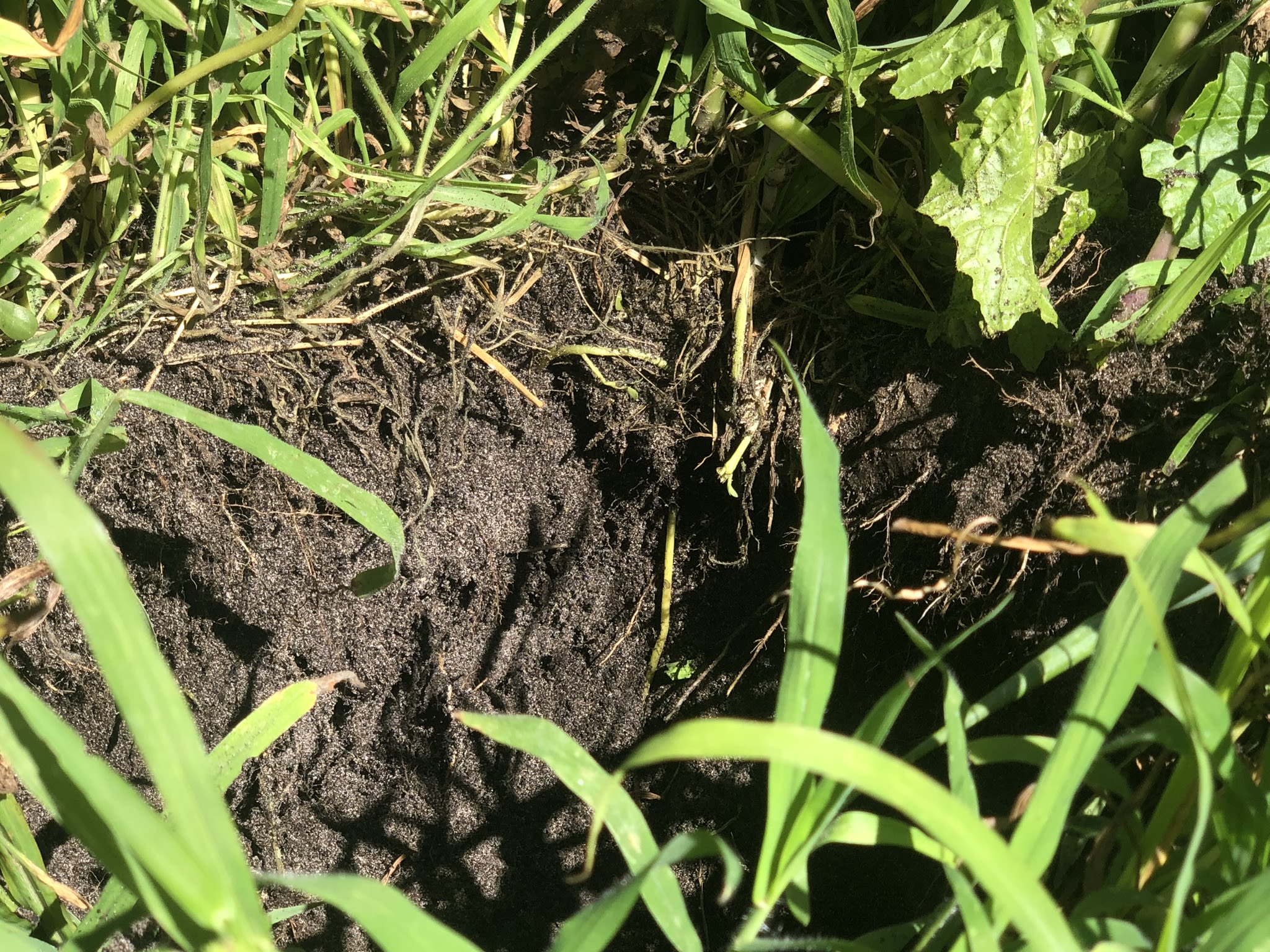
Mineral Amendments
One of the 6 principles of Regenerative Agriculture is to ‘Understand Your Farm Context”. This means, in part, understanding your soil – where it is at, and what it needs to for optimal productivity. Brad had for many years been applying NPK fertilisers without much consideration of what his soil actually needed – these days asking the right questions of his soil testing and analysis is an integral part of his decision making. With that comes an improved understanding of the importance of trace minerals and the necessity of balancing them for plant availability.
Brad with project soil consultant Anthony Quinlan
In addition to addressing his soils trace mineral requirements, Brad has been trialling adding clay to his sandy soils. Clay has a far greater Cation Exchange Capacity (CEC) than sand meaning that the addition of clay should in theory improve the ability of his soils to hold onto essential nutrients and provide a better buffer against soil acidification. He has done this using a multi spreader and spreading the clay at 40 ton/ha. The growth response to date has been positive.
Multi Species Pastures
Brad was part of the Lower Blackwood LCDC's Pasture Biodiversity to Build Soil Health and Resilience project in 2021. A 1 hectare area was seeded over successive spring / autumn / spring seasons with mixes of warm or cool season annuals and perennials. Base line assessments were taken prior to the first seeding and mid and final assessments taken for comparative purposes culminated in a final case study analysis of the demonstration.
Seeding at Boley's Farm
Seeding at Boley's Farm
Read more about Brad's case study anlaysis here
Click through to find out about the key project learnings.
Click through to find out about the key project learnings.
Grazing
Dairy farmers are well versed in the benefits of managed rotational grazing, with very regular moves being the norm to keep grass young and vegetative. Brad plate meters his grass to measure the tonnage in the paddocks and allocate the cows to the size or the volume of feed available in the paddock. The rotation is governed on growth rates so the pasture is allowed to get back to that volume before it gets grazed gain but usually it's a 35 day rest period.
'"It's a little bit governed by the seasonality and how much winter grass we've got but we try to get it to grow to the 'beer can' height before we graze it" - Brad Boley
There are, however, certain times of the year (early winter) when it's difficult to keep the rotations going as the growth rate is so slow, so even on a 40 day rotation the grass is not growing fast enough - Brad holds the rotation out to this long by adding some hay into the paddocks.
Brad would love the luxury of being able to have a sabbath zone (rested for 12 months) but there is always economic pressure to maximise the growth out of the land, so currently that simply is not possible - it is instead an aspirational goal that might be achieved with some of the other practice changes he's making.
Cow Nutrition
Probiotics have been gaining attention in all segments of animal agriculture in the last several years. Although this has been influenced by several factors, the biggest overall driver has been the goal of reducing antibiotic usage due to government regulations and consumer demand.
"Feeding my cows probiotics has led to a 0.30% increase in butter fat and substantially improved overall herd health" - Brad Boley
Brad started feeding his cows probiotics because for livestock with rumens, the inclusion of probiotics in their feed can make a significant difference to productivity and in the case of diary cows, benefits include increased efficiency of milk production, better starch and fiber digestion, and improved her heath. Brad believes the benefits have been absolutely worth the additional cost of including probiotics in his cows' diet.


Desired Outcomes
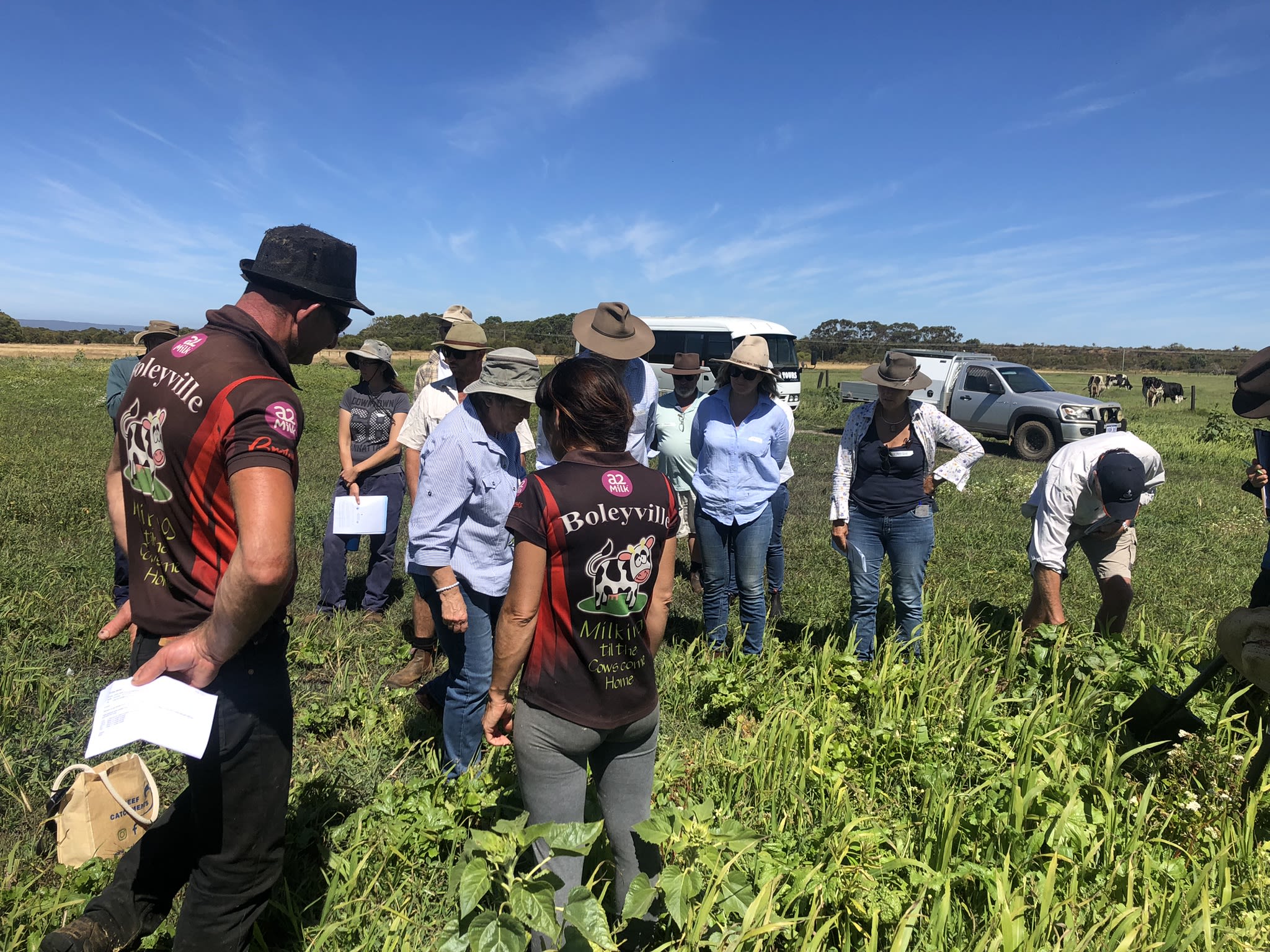
Desired Outcomes
- Improved levels of soil organic matter, soil carbon and soil biological activity for overall better soil health and fertility
- Reduce or eliminate the need for any external inputs (fertilisers)
- Better quality and higher volume pasture
- Improved profitability
"5 years on I'd like to see myself doing what we are trying to do better - getting the system to be more efficient, more productive, more profitable - the same number of cows but higher quality, higher volume grass without the need to spend a lot of money on external inputs like super or nitrogen fertilisers" - Brad Boley
Additional Resources
Talkin' After Hours Webinar: Restoring Farmland and Soils in our Mediterranean Climate
Talkin' After Hours Webinar: The Fundamentals of Agricultural Soils
Talkin' After Hours Webinar: Profit, Productivity and NP
Jo & Kate chat to Dr. Christine Jones about 'Light' Farming & the power of photosynthesis to regenerate our soils, restore water balance to our landscapes, & enable our farmlands to have living ground cover year round.
Jo & Kate chat to Dr. Christine Jones about 'Light' Farming & the power of photosynthesis to regenerate our soils, restore water balance to our landscapes, & enable our farmlands to have living ground cover year round.
In this episode Jo & Kate talk to internationally renowned and highly respected groundcover and soils ecologist Dr Christine Jones about biodiversity on the farm, why it’s important and how it can impact on soil health.
In this episode Jo & Kate talk to internationally renowned and highly respected groundcover and soils ecologist Dr Christine Jones about biodiversity on the farm, why it’s important and how it can impact on soil health.
In this episode Jo & Kate talk with internationally renowned soils ecologist Dr Christine on the secrets that make healthy soils tick and the soil as a living system - including a dive into the ‘liquid carbon pathway’ – what it is, why we need it, how to help it and how to avoid hindering it.
In this episode Jo & Kate talk with internationally renowned soils ecologist Dr Christine on the secrets that make healthy soils tick and the soil as a living system - including a dive into the ‘liquid carbon pathway’ – what it is, why we need it, how to help it and how to avoid hindering it.
This article was produced by Talkin' After Hours, Lower Blackwood Landcares Online Community & Information Hub.
